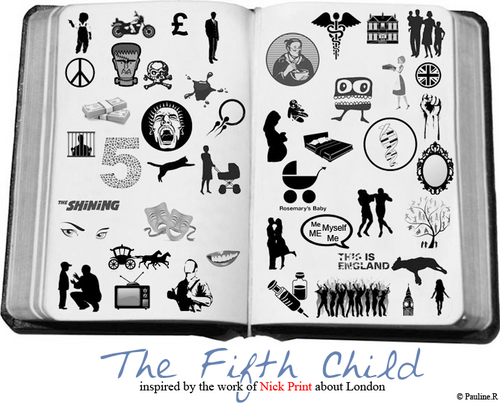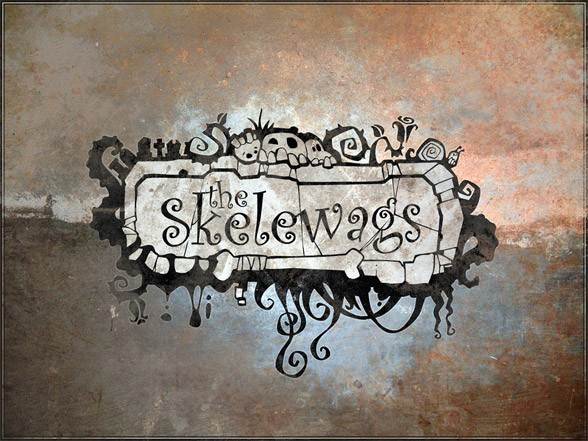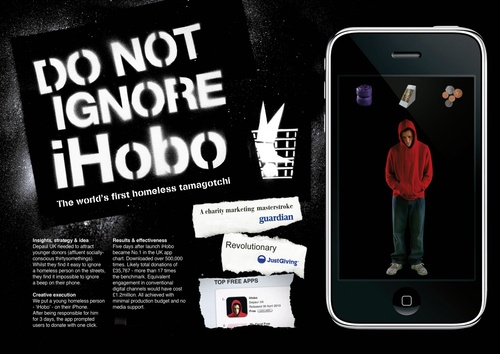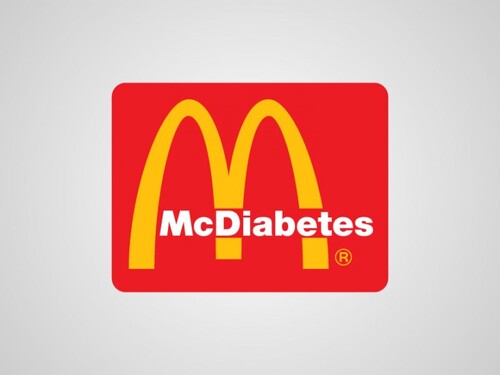-
Wow! How impressive! I must admit that I was stunned by the very canny work designed by Pauline.
Congratulations Pauline! I may use your document in class!
 6 comments
6 comments
-
-
Extracted from The New Yorker, here is a sonnet written by Sherman Alexie about Facebook.
Possible Xblogtation: write your own sonnet about a famous brand?
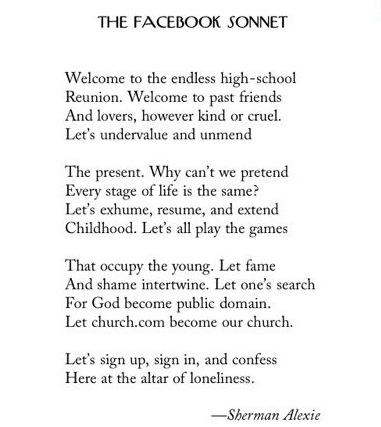
 your comment
your comment
-
The site The Web 2.0 Summit Points of Control proposes a map which represents the force relation between the most important technological companies.
It is inspired by Tolkien's Middle Earth and the board game Risk.
Moreover, you can make comments about the different relations of the companies.
Possible Xblogtation: It could be interesting (STG section for example) to use the document in a lesson about technologies and companies. They could create their own board game for example.
Here is the link.
this was version n°1.0

 your comment
your comment
-
Well I'm now a big fan of Don Kenn's work. He creates his pictures on post-it notes and it's just awesome. It's a blend of Tim Burton and Miyazaki. Just enjoy!
 your comment
your comment
-
Another street art artist I've just discovered. Really talented. I love his little skeleton characters!
 5 comments
5 comments
-
Keep Calm and Carry On was a poster produced by the British government in 1939 during the beginning of the Second World War, intended to raise the morale of the British public in the event of invasion. It was little known and never used. The poster was rediscovered in 2000 and has been re-issued by a number of private sector companies, and used as the decorative theme for a range of other products. There are only two known surviving examples of the poster outside of government archives
Blogged from Wikipedia.
Stéphanie Cialone sent me the following documents that are really bloggstorming.
It is really interesting to study the text which shows that the posters originally designed to motivate the English people against invasions during WWII are to be seen everywhere in England nowadays.
Moreover, the actional project could be to imagine a parody of the famous posters. You can find examples at the end of the post.
Thanks a lot Stéphanie for the documents!!

Keep calm and put up your poster
All around the nation, nostalgia lovers are keeping faith with a slogan to get through the hard times ahead. The Keep Calm And Carry On poster was designed to help boost morale in the second world war, and it has been rediscovered to become the logo of the credit crunch...
Adapted from guardian.co.uk,
Wednesday 18 March 2009
“An original version that has seen better days” - Photograph: Mike Coop
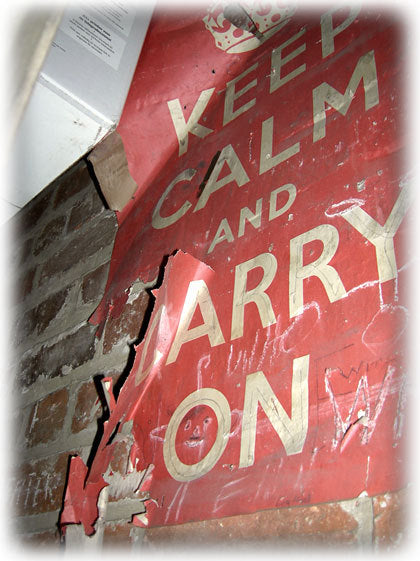


ARTIST STATEMENT
Inspired by reading Keep Calm and Carry On: Jon Henley on the poster we just can't stop buying in The Guardian one lunchtime, and being in a bit of a mood.
Get Excited And Make Things
by Matt Joneshttp://www.20x200.com/art/2009/04/get-excited-and-make-things.html
Text dealing with the subject:
What crisis?
It's the pin-up of our age, gracing homes, shops - even a US embassy. Jon Henley on the poster we just can't stop buying
01
05
10
15
20
25
30
35
Nowadays, of course, it would be farmed out to an expensive communications agency. Back in the spring of 1939, it was an anonymous civil servant who was entrusted with finding the slogan for a propaganda poster intended to comfort and inspire the populace should, heaven forbid, the massed armies of Nazi Germany ever cross the Channel.
This was the third in a series. The first, designed to stiffen public resolve ahead of likely gas attacks and bombing raids, was printed in a run of more than a million and read: Your Courage, Your Cheerfulness, Your Resolution Will Bring Us Victory. The second, identically styled, stated: Freedom Is In Peril.
From August 1939, both posters began appearing all over the country, on billboards, in shops, on railway platforms. The third, though, was held back. This one was for the real crisis: invasion. A few may have made their way on to select officials' walls, but the vast majority of the British public never got to see it. This poster enjoined: Keep Calm And Carry On.
And suddenly these days, it's everywhere, from homes to pubs to government offices. The Lord Chamberlain's Office at Buckingham Palace, the prime minister's strategy unit at No 10, the Serious Fraud Office, the US embassy in Belgium, the vice chancellor of Cambridge University, […] have all ordered posters. Even David Beckham has the T-shirt, we are told.
For 60 years, the poster had been forgotten. Then, one day in 2000, Stuart Manley, co-owner with his wife Mary of Barter Books in Alnwick, Northumberland, was sifting through a box of hardbacks he had bought at auction when he saw "A big piece of paper folded up at the bottom. I opened it out, and I thought, wow. That's quite something. I showed it to Mary, and she agreed. So we framed it and put it up on the bookshop wall. And that's where it all started."
Today, you can buy Keep Calm and Carry On mugs, doormats, T-shirts, hoodies, cufflinks, baby clothes and flight bags from any number of retailers. You can use the design as a screensaver for your computer or mobile phone. There are even spoofs. Facsimiles of the poster itself, which Barter Books initially reproduced after a rash of customers asked to buy its copy (one offered £1,000), have sold in their tens of thousands.
Manley has sold some 41,000 posters. He is not the only one. Mike Coop of keepcalmandcarryon.com reckons he is shifting 300-500 products a week (and admits to having tried to trademark the phrase); the Keep Calm Gallery's Lucas Lepola is selling "probably around 500 a month". […] The reasons, experts reckon, are manifold.
Alain Samson, a social psychologist at the London School of Economics, says that in times of difficulty, "people are brought together by looking for common values or purposes, symbolised by the crown and the message of resilience. The words are also particularly positive, reassuring, in a period of uncertainty, anxiety, even perhaps of cynicism."
Dr Lesley Prince, who lectures in social psychology at Birmingham University, is blunter still. "It is a quiet, calm, authoritative, no-bullshit voice of reason," he says. "It's not about British stiff upper lip, really. The point is that people have been sold a lie since the 1970s. They were promised the earth and now they're worried about everything - their jobs, their homes, their bank, their money, their pension. This is saying, look, somebody out there knows what's going on, and it'll be all right".
Adapted from Jon Henley’s article in The Guardian, Wednesday 18 March 2009
Tool boxSift through (18) = sort = examine minutelyResilience (33) = ability to recover readily from illness, depression, adversity, or the likeKeep a stiff upper lip (36) = keep your chin up = to face misfortune bravely and resolutely / to suppress the display of any emotion.Parodies:



 your comment
your comment
-

I don't know you but I'm more and more stricken by the growing number of young people living in the streets with their dogs. Usually, I avoid looking at them. I'm not proud of it.
I watched a documentary about the phenomenon and was really affected by it. I'd like to deal with the subject in class and I found some interesting documents. I just share them with you.

The aim would be to make pupils aware of the reasons why young people "have" to live in the street. Then they would have to propose solutions (actional project) to fight against Youth Homelessness.

Videos:
Here are some facts (Causes and consequences):
A document from the National Coalition for the Homeless (NCH)
A document from Youthnoise:
(Blogged from: www.youthnoise.com)
Youth Homelessness: Facts and Solutions
- Facts
- Characteristics of Homeless Youth
- Pathways out of Homelessness
- Causes of Youth Homelessness
- Four Basic Types of Homeless Youth (Meet the Youth)
- Effective Solutions for Youth Homelessness
- 10 Needs to Prevent and End Youth Homelessness
- What Needs to Change?
Facts
If you don't personally know someone living on the streets, it's easy to pretend youth homelessness isn't a problem. It is a problem, and it affects millions of normal kids every day. It's time to wake up and pay attention.
- 1.6 to 1.7 million people under 18 will experience homelessness each year. (That's more than the population of Philadelphia.)
- The National Coalition for the Homeless defines homeless youth as individuals under the age of eighteen who lack parental, foster, or institutional care.
- 1 out of every 3 homeless people are under the age of 18.
- Approximately half of all runaways were physically abused before fleeing home.
- The majority of homeless and runaway youth are between the ages of 15 and 17, however three out of 100 runaways are under the age of 10, and 11 out of 100 are between the ages of 11 and 13.
- Approximately half of all runaways were physically abused before fleeing home.
- A third of all runaways will attempt suicide.
- Homeless youth are up to ten times more likely to have or contract HIV than non-homeless adolescents.
- A tenth of homeless and runaway females are reportedly pregnant.
- This year, one in 260 runaways and homeless youths will die from assault, illness and suicide.
Characteristics of Homeless Youth
- No self-sufficiency skills
- No financial resourcesv
- Mental health problems; post-traumatic stress disorder
- Deteriorating physical health
- Substance Abuse
Pathways of Homelessness
The three most common pathways are:
- Parents
- Extended family
- Independent living (only after trying the other two)
Causes of Youth Homelessness
- Family breakdown: a result of dysfunctional or troubled situation
- Systems failure: mainstream programs like child welfare, juvenile corrections facilities and mental health programs. Former foster care youths are disproportionately represented in the homeless population.
Meet the Youth
There are four basic types of homeless youth.
- Fleeing/Runaway, Jamie.
- Episodic (a.k.a. Couch Surfers), Eva.
- Street-Dependent (Travelers/Squatters),Ryan
- Unaccompanied (Shelter Hoppers), Karina.
Solutions
There are three main different kinds of effective solutions:
- Early Intervention/Prevention: make sure a homelessness episode or a family separation doesn't result in long-term homelessness.
- Improve mental health and family systems.
- Intervene with Already-Homeless Youth: to reunite them quickly with their families while strengthening the families' stability
- Independent Housing Options: to help youth who will not be able to return to their families.
Some youth will never be able to return to their families; they need housing programs that provide both shelter and support to help them become self-sufficient...but each type of homeless youth has different needs:
- Jamie (Runaway) and Eva (Episodic) would benefit from early intervention, mental counseling, community-based services, and alternative family placements.
- Karina (Shelter Hopper) requires intensive family reunification services, case managers, or youth advocates or life skills training.
- Ryan (Street-Dependent) would be helped from street-based outreach and one-on-one connections; it's important for housing to provided first before tackling other issues.
10 Needs to Prevent: End Youth Homelessness
- Plan: strategies focused on ending youth homelessness
- Data: how many youth are homeless, what their needs are, etc.
- Emergency prevention: crisis counseling, family reunification services, etc.
- Systems prevention: mainstream programs that provide care and services to youth
- Outreach: programs that reduce barriers and encourage homeless youth to enter the system
- Youth housing continuum: youth shelters, transitional housing, etc.
- Services: access to funded services through mainstream programs
- Youth development: programs that engage youth in meaningful ways, building leadership and decision-making skills
- Permanent housing: supportive housing for homeless youth
- Income: assistance to homeless youth to secure income; educational and vocational programs
What Needs to Change?
Most cities focus on "reaction" solutions instead of long-term solutions. Some good interventions that are not being developed or supported enough are:
- Peer Outreach: train young people (ages 16 to 21) to go out on the street with adult outreach workers. (Homeless youth trust other youth much more easily than they trust adults.)
- Crisis Assistance Information to Youth: develop community-based outreach where young people are (like schools) to prevent homelessness.
- Better Inter-Organization Coordination: create local resource centers and/or websites that address the varied needs of at-risk youth
- Affordable Housing: increase the number of affordable housing options for young adults (ages 16 to 25).
Youth homelessness is a large problem, but by no means is it a hopeless one. If we try to understand the problem as a whole, we can begin to work toward better solutions.
Here is an interesting campaign launched to sensitize people:
More information: http://lemonsblack.com/do-not-ignore-ihobo/
Here is the description of the application you can download on Itunes:
Description
Meet the young homeless person who will be living on your iPhone for the next three days.
You’ll need to be there for him, day and night, providing food, money, warmth and support. He’ll alert you when he gets into trouble or needs your help. And the speed of your response could be the difference between him making it through in one piece, or becoming addicted to drugs.
Depaul UK is the largest youth homeless charity in the UK. For more information go to www.depauluk.org 4 comments
4 comments
-
Nick Print is an artist who created the following painting. It is supposed to gather all that could symbolize London.
Possible Xblogtation: Do the same with another city, film or novel...
 5 comments
5 comments
-
A very interesting concept. Make the logos tell what they really are and emphasize their dark aspects. A funny criticism of the companies.
Possible Xblogtation: Are you up to do your own logo?
Blogged from designerscouch.org
 8 comments
8 comments
-
Lucy Knisley is a very gifted cartoonist. She designed the following summaries of Harry Potter episodes. Some elements of the stories are missing but the cartoons are great and fun!
Here is Lucy's blog: http://lucylou.livejournal.com/
Possible Xblogtation: The cartoons can become trigger documents for oral or written productions. Pupils could create their own to sum-up a short story for example.
 12 comments
12 comments
A blogstorming experience that will blog your mind





